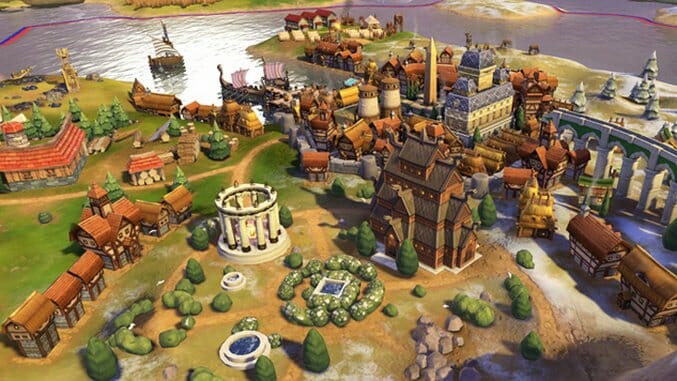Civilization VI Is A Game Of Tiny Enormous Changes

Sequels are hard. The Sophomore Curse is one thing, but what about when you’ve been kicking around for 25 years with a half-dozen titles under your belt, like Firaxis’ illustrious Civilization series? Especially for a game like Civilization, that hangs its hat on the strength and efficiency of its systems, you run the risk of either iterating too much and alienating a sizable existing player base, or playing it safe and boring everyone. Threading that needle can be a tricky proposition, but thread it Civilization VI does.
Civilization VI is a game of tiny enormous changes. It’s a study in how to update existing systems without completely overhauling them, and it works as well as could ever be expected. Long-time fans will find plenty to recognize and appreciate, despite some of the surface-level changes. It’s only once you dig into the game’s guts that you see just how different, at its core, Civilization VI is from its predecessors.
Everything about this game is pushing players to be deliberate, to plan ahead, and to strategize. But short of that making the game less accessible to those who have never tried to lead their own digital civilization to cyber glory, it actually creates a beautiful transparency. When Civilization VI is at its finest, it’s like a grandfather clock clicking and whirring rhythmically as all its gears and dials click into place.
The basic premise is the same: Choose a nation and a ruler, then build cities and tiny little pixelated farms and mines, cultivate a military, and basically turn as much of the map to your color as you can. But the changes, while subtle, are also incredibly influential in how that familiar loop plays out. There’s the obvious stuff, of course — workers are now “builders,” units that have a set number of “charges” they can use to build improvements before they must be retrained. Cities can now build “districts,” which are special areas that confer bonuses and can be improved in their own right (for example, the Encampment district can be bolstered with a Barracks or a Stable, making infantry and cavalry, respectively, more powerful). Wonders now require their own tile, discouraging indiscriminate building (sorry, Egypt players).
The sum of all of these small but major changes is that Civilization VI is a very different familiar game. In a community that has had 25 years to dissect, experiment, theory craft, and cultivate “optimum build orders,” doing the game design equivalent of moving everything just 2 inches to the left can have profound implications on what used to be held as dogma. Even veteran players have to rethink tried and true strategies.
-

-

-

-

-

-

-

-

-

-

-

-

-

-

-

-

-

-

-

-

-

-

-

-

-

-

-

-

-

-

-

-

-

-

-

-

-

-

-

-












































